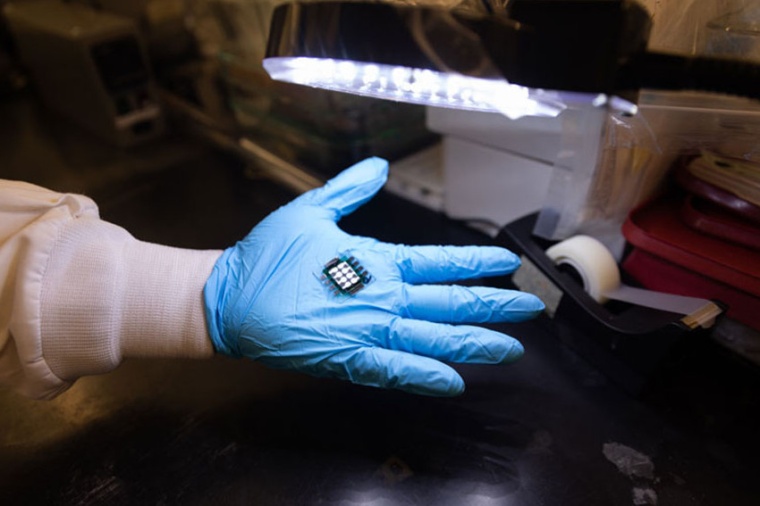Perovskite solar cell breaks efficiency record
Improving cell efficiency using a combination of molecules.
Northwestern University researchers have raised the standards again for perovskite solar cells with a new development that helped the emerging technology hit new records for efficiency. The findings describe a dual-molecule solution to overcoming losses in efficiency as sunlight is converted to energy. By incorporating first, a molecule to address surface recombination, in which electrons are lost when they are trapped by defects – missing atoms on the surface, and a second molecule to disrupt recombination at the interface between layers, the team achieved a National Renewable Energy Lab (NREL) certified efficiency of 25.1 % where earlier approaches reached efficiencies of just 24.09 %.

“Perovskite solar technology is moving fast, and the emphasis of research and development is shifting from the bulk absorber to the interfaces,” said Ted Sargent. “This is the critical point to further improve efficiency and stability and bring us closer to this promising route to ever-more-efficient solar harvesting.” Conventional solar cells are made of high-purity silicon wafers that are energy-intensive to produce and can only absorb a fixed range of the solar spectrum. Perovskite materials whose size and composition can be adjusted to tune the wavelengths of light they absorb, making them a favorable and potentially lower-cost, high-efficiency emerging tandem technology.
Historically perovskite solar cells have been plagued by challenges to improve efficiency because of their relative instability. Over the past few years, advances from Sargent’s lab and others have brought the efficiency of perovskite solar cells to within the same range as what is achievable with silicon. In the present research, rather than trying to help the cell absorb more sunlight, the team focused on the issue of maintaining and retaining generated electrons to increase efficiency. When the perovskite layer contacts the electron transport layer of the cell, electrons move from one to the other. But the electron can move back outward and recombine with holes that exist on the perovskite layer.
“Recombination at the interface is complex,” said Cheng Liu, a postdoctoral student in the Sargent lab. “It’s very difficult to use one type of molecule to address complex recombination and retain electrons, so we considered what combination of molecules we could use to more comprehensively solve the problem.” Past research has found evidence that one molecule, PDAI2, does a good job at solving interface recombination. Next they needed to find a molecule that would work to repair surface defects and prevent electrons from recombining with them. By finding the mechanism that would allow PDAI2 to work with a secondary molecule, the team narrowed in on sulfur, which could replace carbon groups – typically poor at preventing electrons from moving – to cover missing atoms and suppress recombination.
The same group developed a coating for the substrate beneath the perovskite layer to help the cell work at a higher temperature for a longer period. This solution, according to Liu, can work in tandem with the other findings. While the team hopes their findings will encourage the larger scientific community to continue moving the work forward, they too will be working on follow-ups. “We have to use a more flexible strategy to solve the complex interface problem,” Cheng said. “We can’t only use one kind of molecule, as people previously did. We use two molecules to solve two kinds of recombination, but we are sure there’s more kinds of defect-related recombination at the interface. We need to try to use more molecules to come together and make sure all molecules work together without destroying each other’s functions.” (Source: Northwestern U.)
Link: Kanatzidis Group, Dept. of Chemistry, Northwestern University, Evanston, USA











